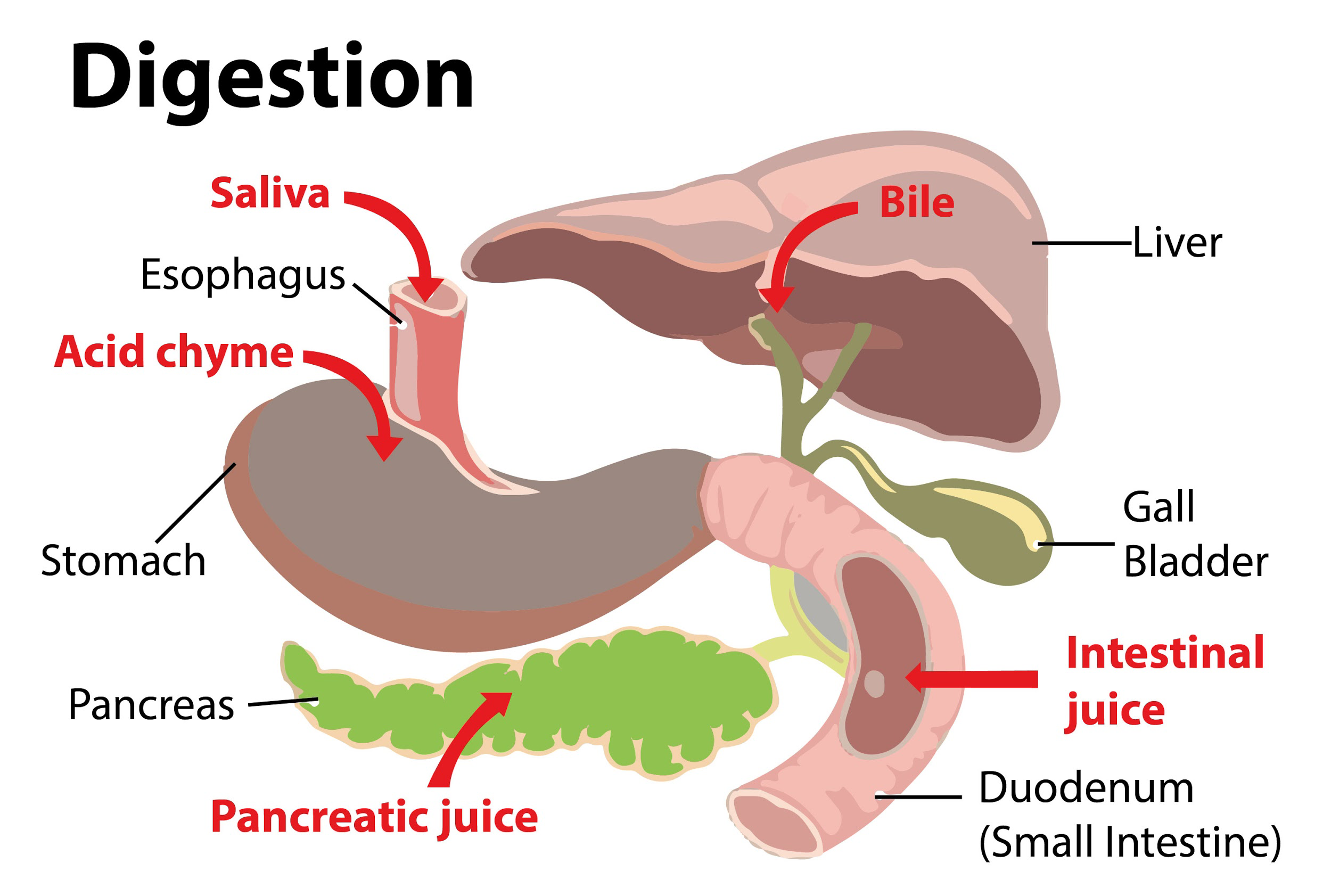
Explain the digestion in the small intestine?
Answer
582.9k+ views
Hint: The small intestine is an organ present in the gastrointestinal tract. It is located between the stomach and the large intestine. Most of the digestion and absorption of food takes place here and is the longest part of the digestive system.
Complete answer:
The small intestine is the place where large amounts of nutrients and minerals along with water is absorbed. It secretes digestive juices which help in digestion and absorption of food. The juices from the pancreas and gallbladder will be transferred to the small intestine which helps in the process of digestion.
The small intestine is divided into three main parts: duodenum (the shortest region near the stomach), jejunum (middle portion), and ileum (the end portion of the small intestine which involves the absorption of remaining products). In the duodenum, small finger-like projections called villi are present which helps in the absorption of the food. Jejunum has a lining of enterocyte cells which digests small nutrients with the help of digestive enzymes. The ileum helps in the absorption of bile salts, vitamin B12, and other products that were left.
In the small intestine, the hormones cholecystokinin and secretin are produced which along with digestive enzymes and juices results in the absorption and digestion of food. In the small intestine, three classes of nutrients are digested which involves lipids, proteins, and carbohydrates.

Note:
The digestive system was discovered in the seventeenth century by a Flemish physician Jan Baptiste Van Helmont. The digestion starts from the esophagus and from there the food is transported to the stomach, then the small intestine to the large intestine, and finally, from the large intestine, the remaining wastes are excreted through the anus.
Complete answer:
The small intestine is the place where large amounts of nutrients and minerals along with water is absorbed. It secretes digestive juices which help in digestion and absorption of food. The juices from the pancreas and gallbladder will be transferred to the small intestine which helps in the process of digestion.
The small intestine is divided into three main parts: duodenum (the shortest region near the stomach), jejunum (middle portion), and ileum (the end portion of the small intestine which involves the absorption of remaining products). In the duodenum, small finger-like projections called villi are present which helps in the absorption of the food. Jejunum has a lining of enterocyte cells which digests small nutrients with the help of digestive enzymes. The ileum helps in the absorption of bile salts, vitamin B12, and other products that were left.
In the small intestine, the hormones cholecystokinin and secretin are produced which along with digestive enzymes and juices results in the absorption and digestion of food. In the small intestine, three classes of nutrients are digested which involves lipids, proteins, and carbohydrates.

Note:
The digestive system was discovered in the seventeenth century by a Flemish physician Jan Baptiste Van Helmont. The digestion starts from the esophagus and from there the food is transported to the stomach, then the small intestine to the large intestine, and finally, from the large intestine, the remaining wastes are excreted through the anus.
Recently Updated Pages
Why are manures considered better than fertilizers class 11 biology CBSE

Find the coordinates of the midpoint of the line segment class 11 maths CBSE

Distinguish between static friction limiting friction class 11 physics CBSE

The Chairman of the constituent Assembly was A Jawaharlal class 11 social science CBSE

The first National Commission on Labour NCL submitted class 11 social science CBSE

Number of all subshell of n + l 7 is A 4 B 5 C 6 D class 11 chemistry CBSE

Trending doubts
Differentiate between an exothermic and an endothermic class 11 chemistry CBSE

10 examples of friction in our daily life

One Metric ton is equal to kg A 10000 B 1000 C 100 class 11 physics CBSE

Difference Between Prokaryotic Cells and Eukaryotic Cells

1 Quintal is equal to a 110 kg b 10 kg c 100kg d 1000 class 11 physics CBSE

State the laws of reflection of light




